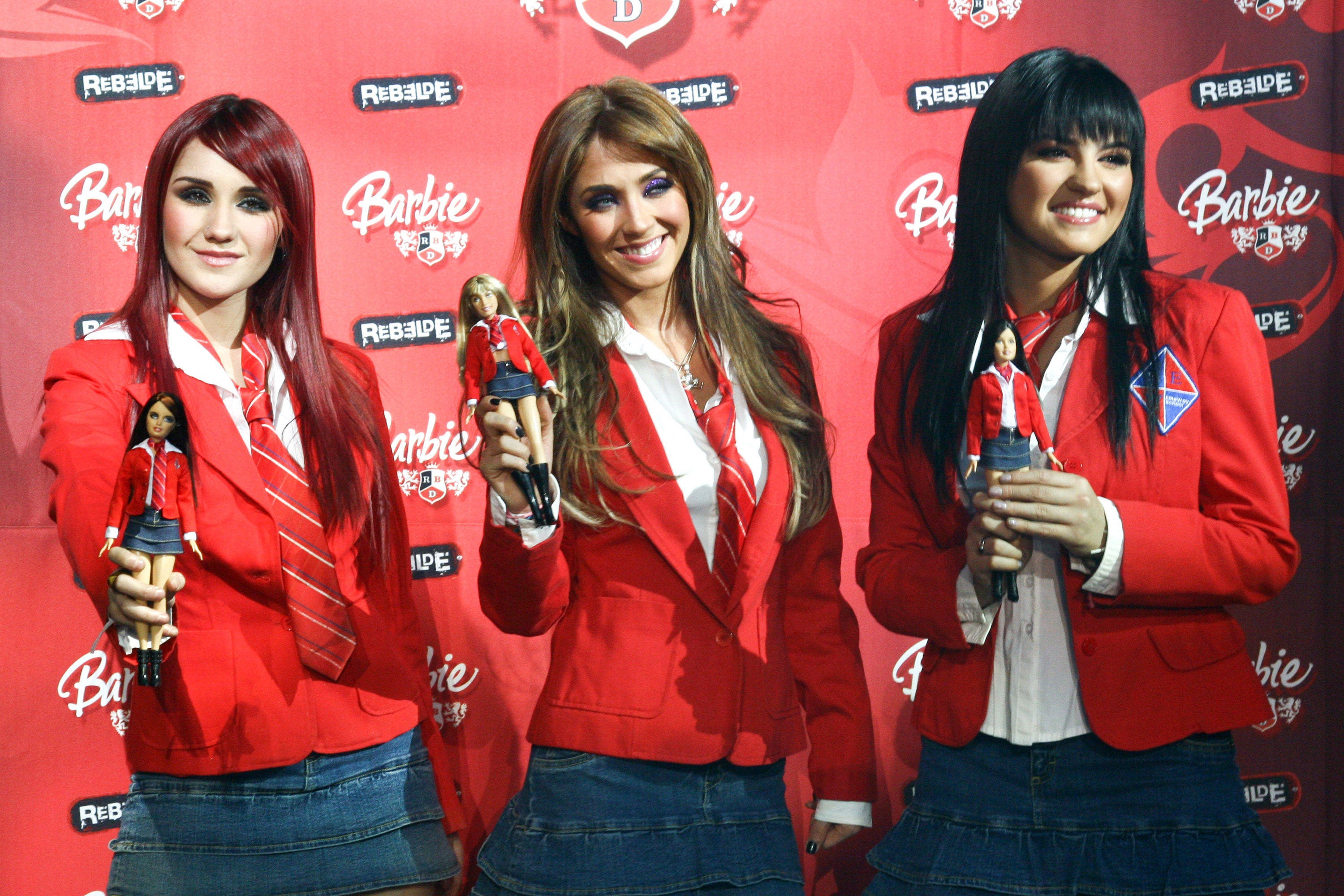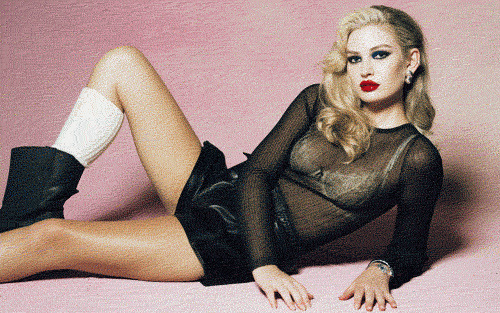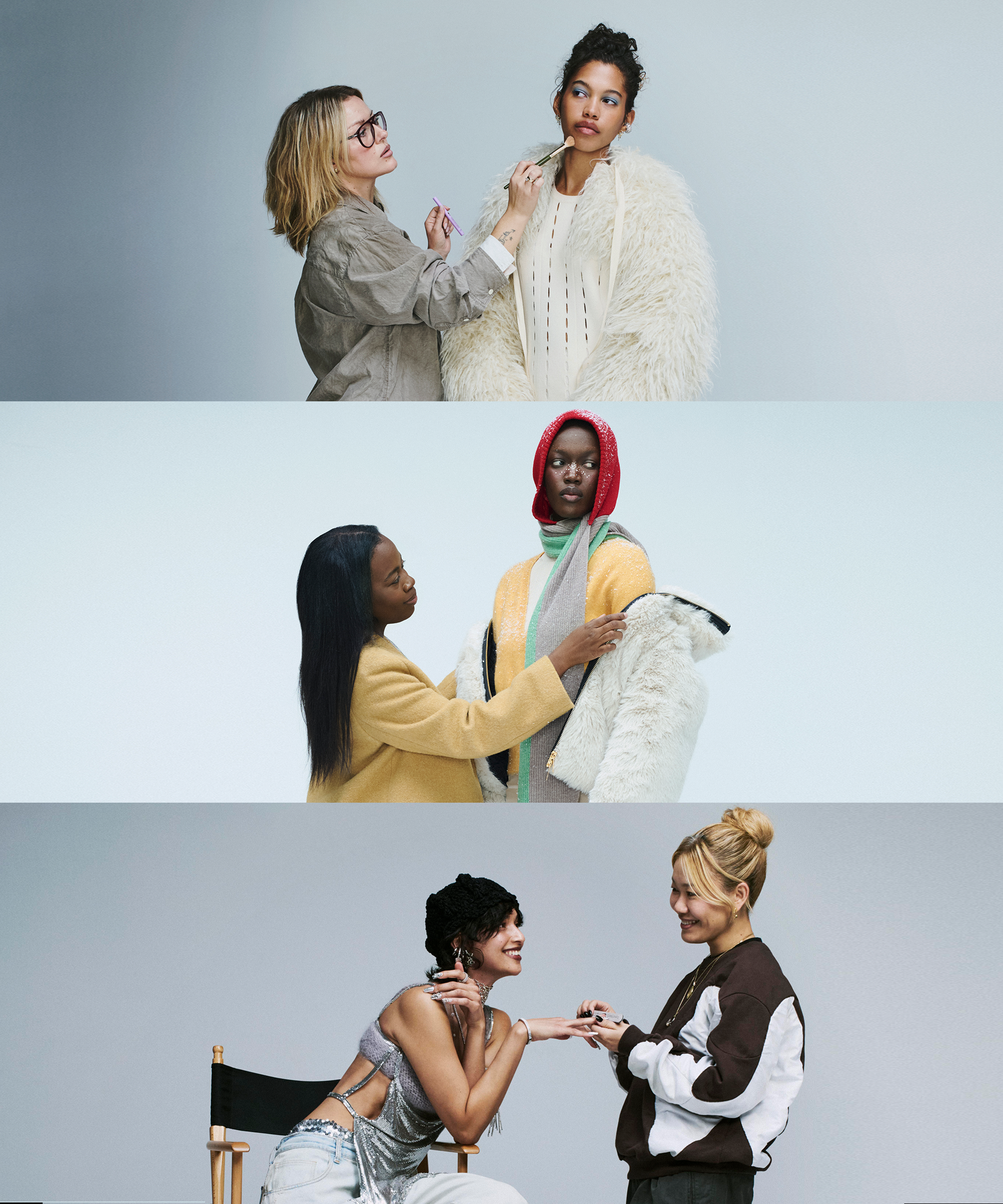
I was only 11 years old when I saw Rebelde, the Mexican telenovela that centered on the not-so-complicated lives of the ultra-rich teenagers at the fictional Mexico City Elite Way School. I was obsessed with the school’s risqué uniforms, a mix of early 2000s low-rise aesthetic with the era’s pop-punk trends.
The girls in the show — like protagonists Mia Colucci (Anahí) and Roberta Pardo (Dulce María) — alternated between two different uniforms. The everyday look featured a white button-down shirt with a loosened red tie, a red blazer, denim mini skirt, and knee-high black boots. Meanwhile, the formal version featured a blue button-down shirt, a red tie, a black blazer on top, paired with a black mini skirt and boots. My pre-teenage friends would fantasize about the day our Baptist school would allow such a skin-baring take on a uniform. But, I always wondered why the uniforms in Rebelde couldn’t reflect my reality — or any school’s for that matter.

Rebelde is hardly the only show in pop culture that showcases unrealistic school uniforms. From Netflix’s Elite to HBO Max’s Gossip Girl reboot, the uniforms in pop culture have a sneaky way of ditching all the dress codes (just like the most rebellious and fashionable student of every class). While the shows represent a very privileged sector of our society, they also present an alternate reality where students are granted the freedom to dress in a way that reflects their individuality and identity.
Take the characters who attend Constance Billard St. Jude’s in CW’s Gossip Girl. Over the course of several seasons, the show’s costume designer Eric Daman cemented the luxurious, preppy look of the Upper East Side’s teenagers, which often involved eye-catching accessories and hemlines that would never make it past real-life administrators.
The school look Serena van der Woodsen (Blake Lively) wore is perhaps the best example of this rule-breaking, regularly featuring miniskirts and thigh-high socks (paired with high heels!). From the start, in the show’s promotional photos, we saw Serena in a white button-down shirt with a plaid tie, paired with a plaid mini skirt and tie-up ankle booties. Throughout the show’s first two seasons (before she graduated high school and deferred admission to Brown University), this formula remained consistent.

While the hemlines Blair Waldorf (Leighton Meester) sported may not have been as scandalous, Constance Billard’s queen bee was still allowed to play with her uniform’s styling. In Season 2, Blair goes to school in a white shirt with an ivory ruffled cape, tied at the neck with a navy choker. The look is accessorized with a pair of navy-and-white Mary Jane shoes and a crystal-encrusted headband. In a later episode, the Yale hopeful wears a pink-and-blue plaid blazer with a navy mini skirt, pairing the look with white tights and navy-and-white pumps. It was a lot. It was also fabulous.
As a high school student inspired by Serena and Blair, I’d often challenge my school’s dress code. It started with one red bowtie headband, small enough to conceal the fact that it did not meet the school’s strict color palette. Later, I changed it for a black velvet headband with an oversized bow reminiscent of then-fashion blogger Tavi Gevinson’s giant accessory at the 2012 Dior Couture show (who coincidentally went on to join the cast of the Gossip Girl reboot). I think Blair would’ve been proud. My social studies teacher? Not so much.
School uniforms have historically provided relief for parents spending hefty amounts on back-to-school materials for their children. According to the National Retail Federation, parents are expected to spend $848 on back-to-school items this fall, a 7.6% increase from last year. Clothing and shoes, according to the survey, are two of the top categories for back-to-school items, with a combined average cost of $414.50.
It’s true that what we wear to school is still marked by access and privilege, a conversation that pop culture is just starting to have, with shows like the Gossip Girl reboot trying to address the classism embedded in its narrative. The majority of the student body in this country cannot afford to get new shoes for school in the name of self-expression, but the uniforms meant to level the playing field, especially for low-income students, can still come with an unaffordable price tag.
And when students are afforded the opportunity to step outside a uniform, dress codes and heavy outfit policing can result in embarrassing experiences, especially for young girls and queer students. For some, daring to show up to school in a spaghetti strap tank top or distressed jeans instead of the prescribed attire can have consequences. In 2018, a student in Palm Beach was suspended for wearing ripped jeans. The year before, a high school senior in Maine was asked to retake her school photos because she had exposed shoulders. Over the past month, students at Simpson Middle School in Atlanta have staged protests against dress codes, after 15 students were reported for violating the school’s clothing standards on their first day. Since then, students have worn T-shirts that call out the dress codes as “sexist,” “racist,” and “classist.”

In the face of these kinds of headlines, it’s hard not to idealize pop culture portrayals of fashion-forward school uniforms and lax (or nonexistent) dress codes. While most of these depictions center on characters operating with ample racial and economic privilege, their experiences in schools seemingly devoid of policing and judgement paint an appealing picture of classrooms serving as safe spaces for teenagers to learn to express themselves through clothes.
When Élite’s Rebecca León (Claudia Salas) shows up to class wearing a cropped button-down shirt with bike shorts and fishnets, no authority figure bats an eye. Neither do the teachers when Cher Horowitz wears a yellow mini skirt suit in Clueless. These characters’ dress code-free teenage years are just one more facet of their idyllic upbringings, where real-life stressors are minimal. .
While I was never able to fulfill my Rebelde dreams at school, my mom was kind enough to let me channel Mia Colucci’s school outfits after the bell rang. Between Limited Too mini skirts and Aldo knee-high boots (and a star sticker on my forehead, just like Mia’s), I was free to experiment with my look as I pleased. That is, until the bell rang again. Maybe costume designers, from Gossip Girl’s Eric Daman to Élite’s Cristina Rodríguez, have the right idea: School outfits could simply be another tool for students to explore as they figure out their place in the world.
Like what you see? How about some more R29 goodness, right here?
A Love Letter To Rory Gilmore’s School Uniform




